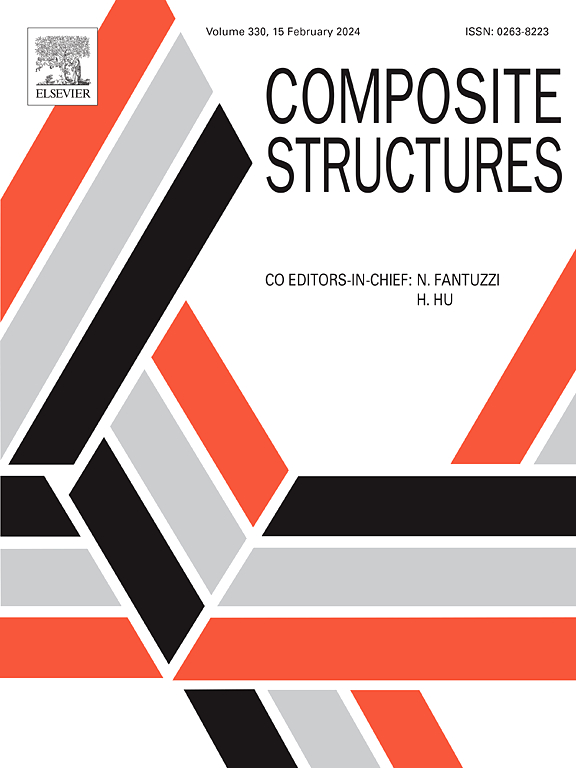Stacking sequence optimization of variable thickness composite laminated plate based on multi-peak stacking sequence table
IF 6.3
2区 材料科学
Q1 MATERIALS SCIENCE, COMPOSITES
引用次数: 0
Abstract
This paper demonstrates a stacking sequence optimization method for variable thickness composite laminated plates via multi-peak stacking sequence table (MPSST). “Multi-peak” refers to the capability of composite plates to have non-monotonic thickness variations, allowing multiple peak thicknesses across different regions. To enhance design flexibility and obtain better optimization results, this study divides the composite laminated plate into several sub panels using local minimum thickness and generates various ply structures through ply-by-ply insertion from the dividing area. The concept of MPSST is developed to describe the ply drop sequence between dividing area and sub panels, which can expand the design space while maintaining ply continuity. Then the stacking sequence optimization problem is transformed into the optimization design of multiple variables in MPSST. Through optimizing the stacking sequence of the thinnest region and inserted plies of sub panels, the optimum stacking sequences of multiple regions are obtained, which can decrease the total number of optimization variables and increase the manufacturability of optimization results. The application example of the 18-region composite plate shows that the proposed methodology can reduce the total weight from 28.55 kg with the traditional SST method to 27.89 kg, representing a reduction of 2.31 %, demonstrating its effectiveness and accuracy.
求助全文
约1分钟内获得全文
求助全文
来源期刊

Composite Structures
工程技术-材料科学:复合
CiteScore
12.00
自引率
12.70%
发文量
1246
审稿时长
78 days
期刊介绍:
The past few decades have seen outstanding advances in the use of composite materials in structural applications. There can be little doubt that, within engineering circles, composites have revolutionised traditional design concepts and made possible an unparalleled range of new and exciting possibilities as viable materials for construction. Composite Structures, an International Journal, disseminates knowledge between users, manufacturers, designers and researchers involved in structures or structural components manufactured using composite materials.
The journal publishes papers which contribute to knowledge in the use of composite materials in engineering structures. Papers deal with design, research and development studies, experimental investigations, theoretical analysis and fabrication techniques relevant to the application of composites in load-bearing components for assemblies, ranging from individual components such as plates and shells to complete composite structures.
 求助内容:
求助内容: 应助结果提醒方式:
应助结果提醒方式:


